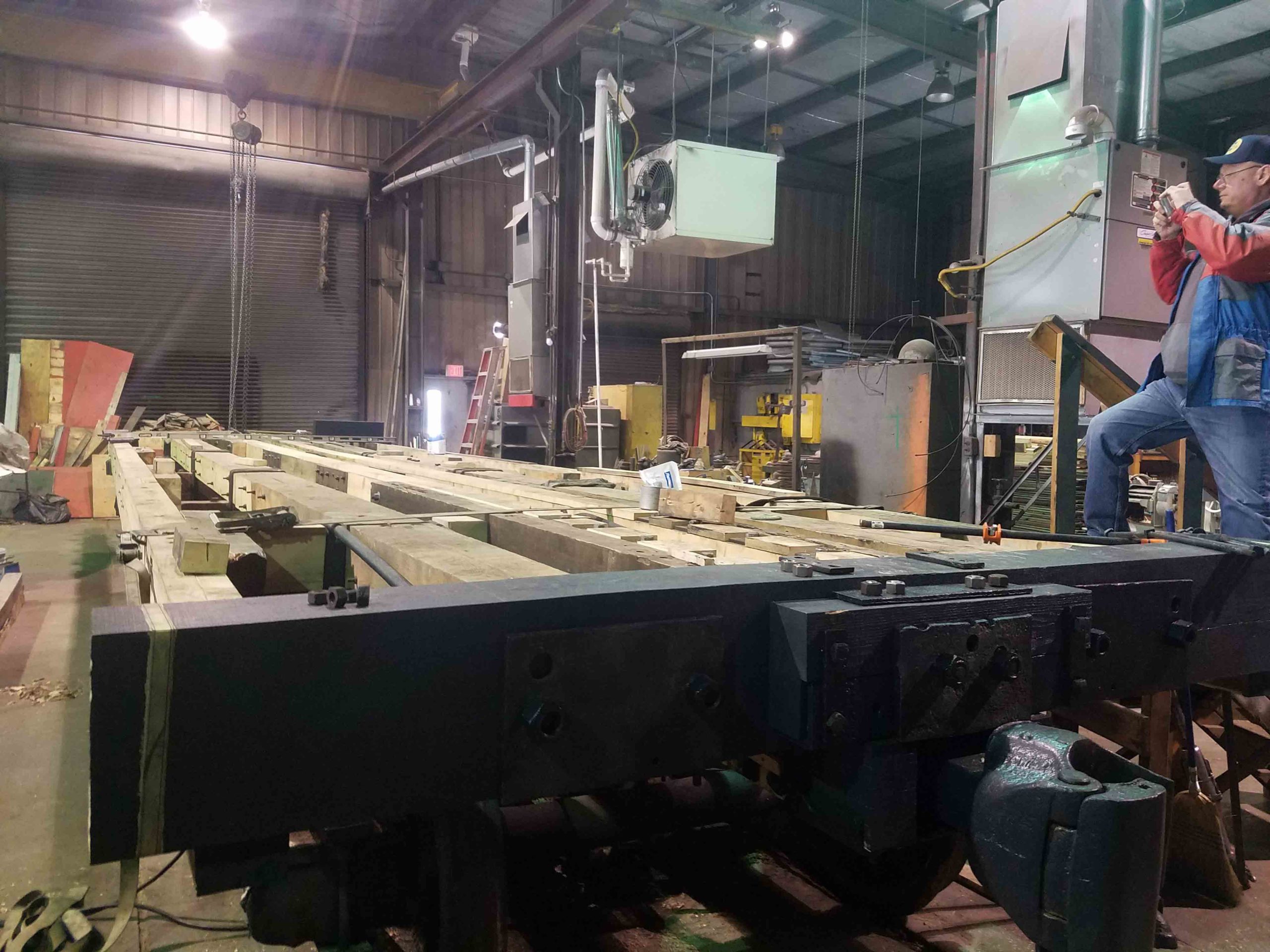Originally West Virginia Spruce Lumber Co., log car No. 419, one of about 100 wooden truss-rod flats delivered by Middletown Car Works, Middletown, Pa., between 1906 and 1909, this venerable survivor labored until 1945 hauling timber between the woods and Spruce and Cass. According to the late Phil Bagdon, Cass historian and author, Mower Lumber Co., which bought out WVSLC in the mid-1940s, hired General Manager Fred Weber away from Meadow River Lumber in Rainelle, W.Va., to introduce the use of camp cars in the woods to the Cass operation. Weber supervised the construction of several camp-car sets on 17 surplus Middletown logging flats 1944-1945; the last active installation was at Old Spruce in 1960. Midwest Raleigh Steel Co. conveyed the last four camp cars to the state in 1962 and, today, only No. 419 remains.
According to John Smith, CEO of Cass operator Durbin & Greenbrier Valley Railroad, “During the first four years of operations at Cass, we concentrated our efforts on improving the condition of the steam locomotives and the passenger car fleet. This took most of our time and all of our money, but we have finally caught up. The most critical piece of historical equipment seemed to be the vulnerable wooden camp car, and so we decided to take the plunge.”
Carpenter Farnsworth started by deconstructing the camp car and assessing the condition of every piece of lumber he removed. Finally, after he removed the flooring, he found that most of the old-growth pine frame beams beneath were rotten. Carefully, he removed the beams one by one, and cut off and saved every piece that could be reused. Next, he purchased or milled new pine beams of the right cross-sectional dimensions; many of them came from trees that had fallen across the West Virginia Central right-of-way during the winter months (Mark Farnswoth owns and operates a steam-powered sawmill not far from Cass). Because the original old-growth-pine frame timbers were very long single beams, Farnsworth developed a technique to splice the shorter lengths available to him. He also milled and installed red oak anchors for the truss rods. By April 2019, he had sand-blasted and painted the original truss rods, bolsters, and trucks; and completed the main frame and end sills. Next, he plans to install new or salvaged flooring; and then frame the walls and windows using as much of the original wood as possible. He’ll follow that with a roof, covering the wood with prototypical tarpaper; and then nail on new and salvaged siding and windows. As a final step, Farnsworth will paint the sides and ends the same bright-red used by Mower Lumber, but using the longer-lasting, more durable paints available today.
Says Smith: “We anticipate the project will be completed in time for the 2020 season. The car will be outfitted much the same as the popular Castaway Cabooses with shower; restroom; and a kitchen with stove, oven, refrigerator and sink. The outward appearance will not change from the original, but we’ll install water and sewage tanks underneath. We are constructing a siding along the Greenbrier river two miles north of Cass for the camp site where the customers will be staying. It’s very remote with great river views.”
Some 110 years after the original logging flat was constructed, and nearly three-quarters of a century after the flat was converted to camp car, No. 419 will again take its place on the Cass Scenic Railroad active rolling-stock roster. With any luck, the new and improved version will last at least that long.















Glad this car is being saved even if the interior is being altered for overnight camping. If you want a unique experience, reserve one of the Castaway Cabooses (Cabeese?). My wife and I and our two grown children stayed overnight in one a few years back and loved it. It’s so popular, you usually have to book the year before. Check the link for more information. http://mountainrailwv.com/tour/castaway-caboose-overnights/